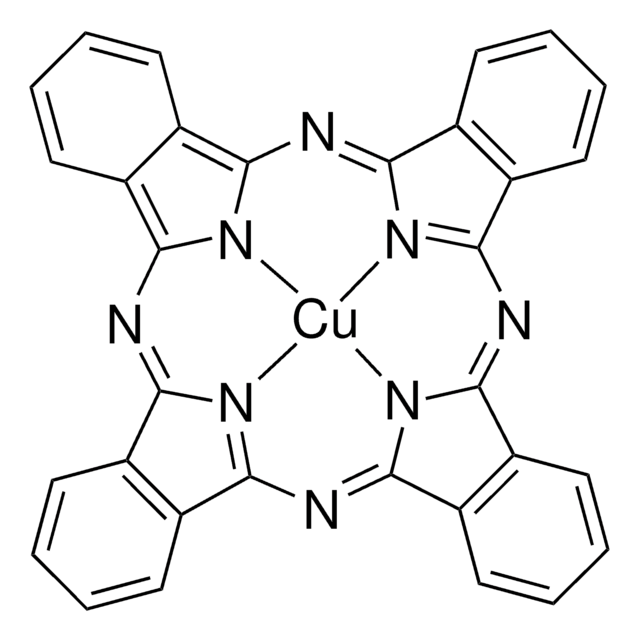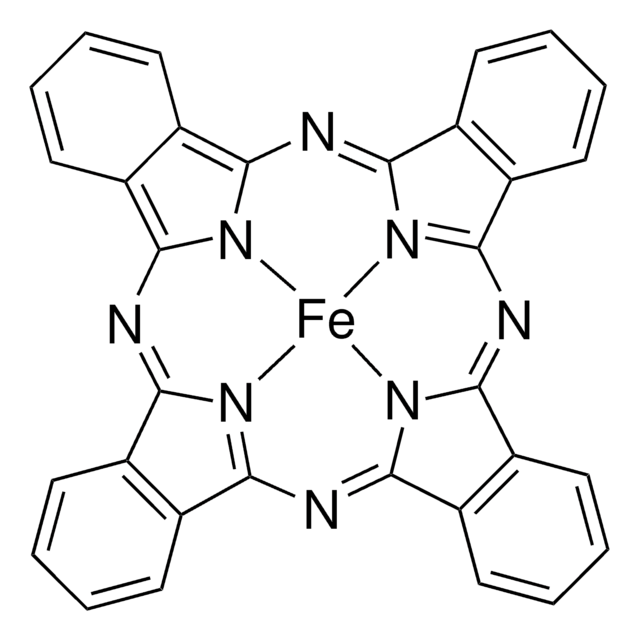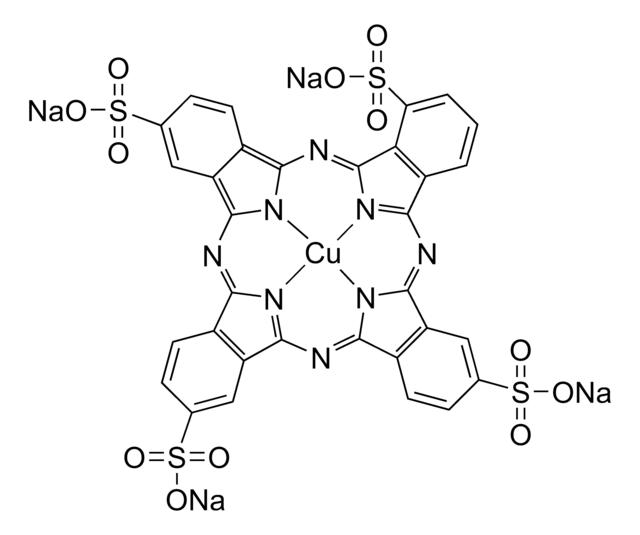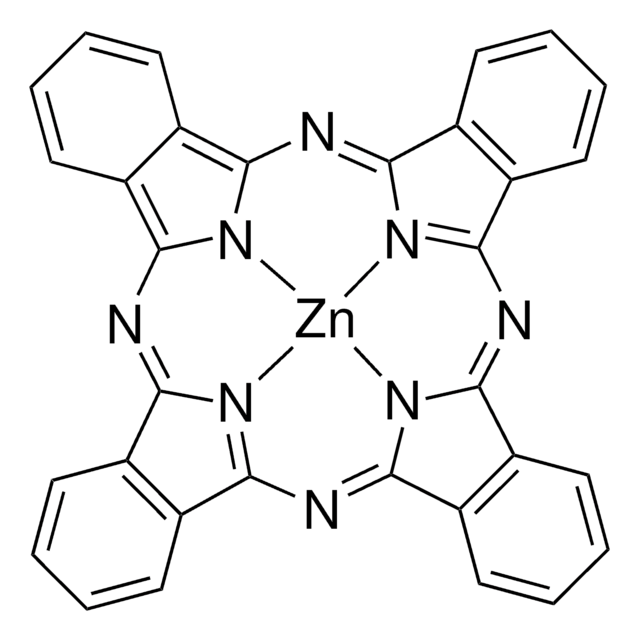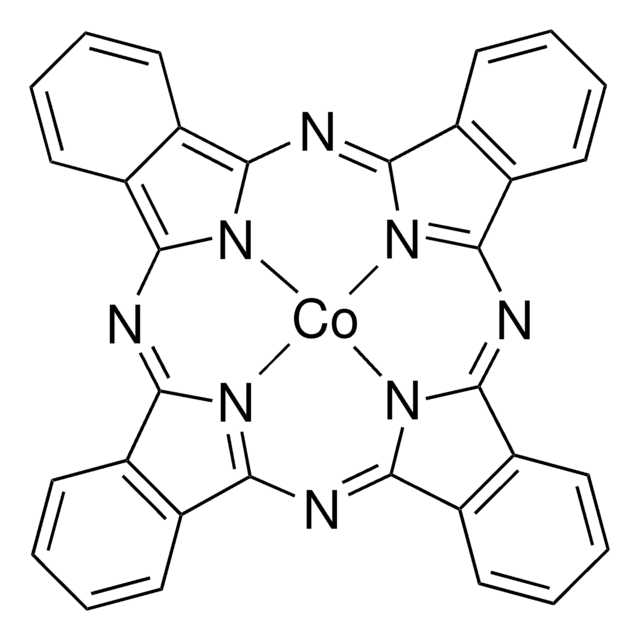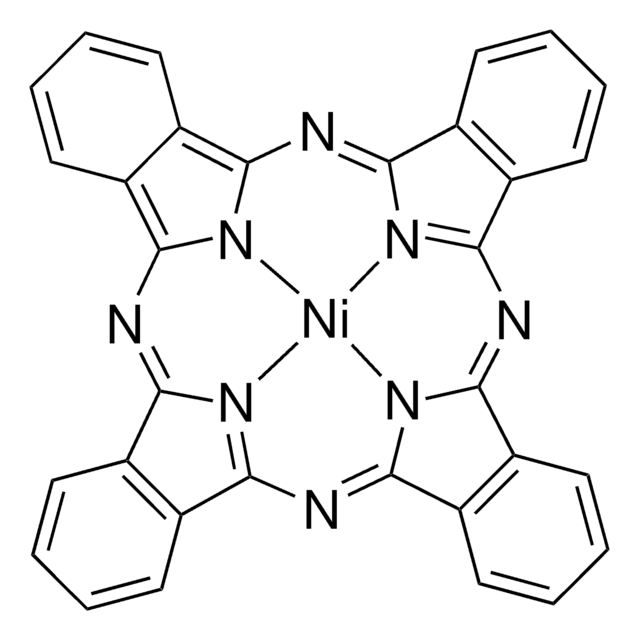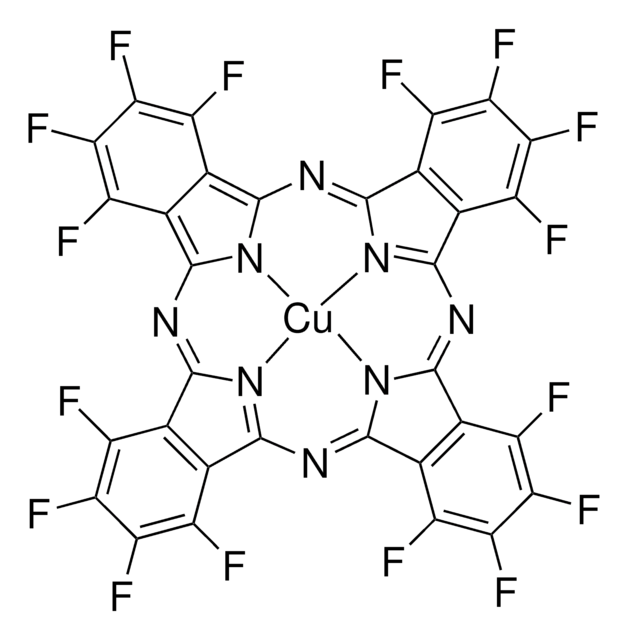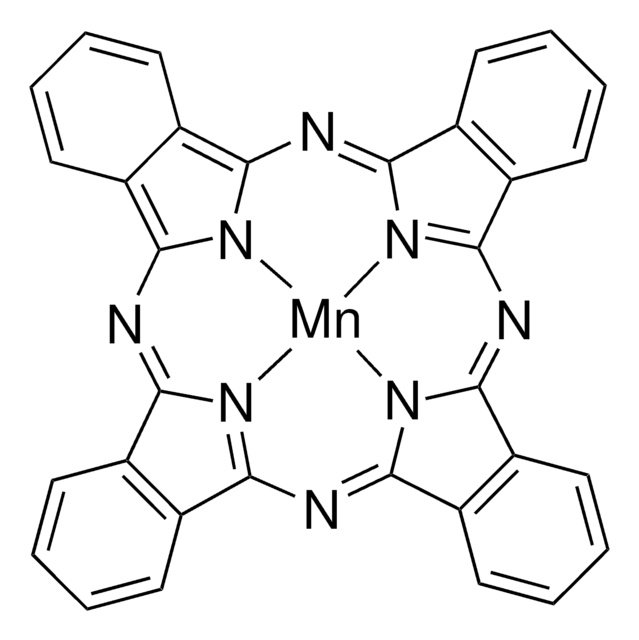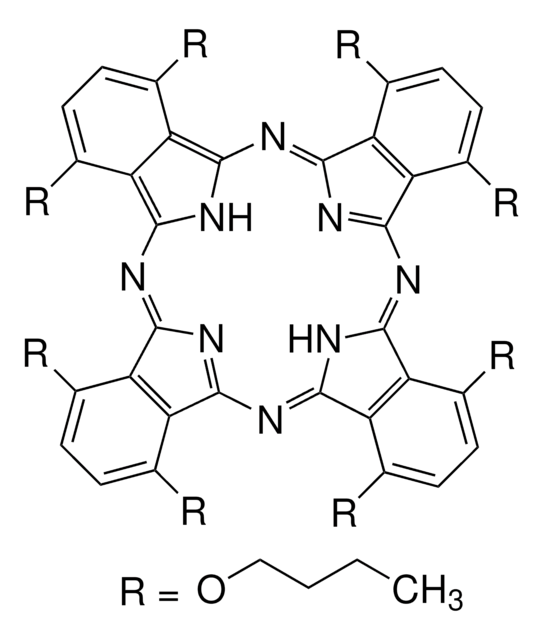推薦產品
成份
Dye content, >99%
品質等級
λmax
678 nm
OLED器件效能
ITO/CuPc/NPD/Alq3/C60/Mg:Ag
ITO/CuPc/NPD/Alq3/LiF/Al
ITO/CuPc/NPD/CBP:FIrpic (6%)/BAlq3/LiF/Al
OPV器件效能
ITO/CuPc/PTCDA/In
ITO/PEDOT:PSS/CuPc/C60/BCP/Al
SMILES 字串
c1ccc2c(c1)C3=NC4=[N@@H]5C(=Nc6n7c(N=C8c9ccccc9C%10=[N@@H]8[Cu]57N3C2=N%10)c%11ccccc6%11)c%12ccccc4%12
InChI
1S/C32H16N8.Cu/c1-2-10-18-17(9-1)25-33-26(18)38-28-21-13-5-6-14-22(21)30(35-28)40-32-24-16-8-7-15-23(24)31(36-32)39-29-20-12-4-3-11-19(20)27(34-29)37-25;/h1-16H;/q-2;+2
InChI 密鑰
XCJYREBRNVKWGJ-UHFFFAOYSA-N
尋找類似的產品? 前往 產品比較指南
應用
- A facile molecularly engineered copper (II) phthalocyanine as hole transport material for planar perovskite solar cells with enhanced performance and stability: This study introduces a modified copper(II) phthalocyanine that enhances the performance and stability of perovskite solar cells (Yang et al., 2017).
- Dopant-free methoxy substituted copper (II) phthalocyanine for highly efficient and stable perovskite solar cells: Discusses the synthesis and application of a methoxy-substituted copper(II) phthalocyanine, improving the efficiency and stability of perovskite solar cells (Ding et al., 2020).
- Highly efficient dye-sensitized solar cells based on metal-free and copper (II) phthalocyanine bearing 2-phenylphenoxy moiety: Examines novel phthalocyanines for use in dye-sensitized solar cells, focusing on their synthesis and photophysical properties (Ali et al., 2016).
- Operando HERFD-XANES and surface sensitive Delta mu analyses identify the structural evolution of copper (II) phthalocyanine for electroreduction of CO2: This research uses advanced spectroscopic techniques to explore the structural changes in copper(II) phthalocyanine during CO2 electroreduction (Mei et al., 2022).
- New dye sensitized photocatalysts: Copper (II)-phthalocyanine/TiO2 nanocomposite for water remediation: Studies a copper(II) phthalocyanine-TiO2 composite as a photocatalyst for water remediation, showing its effectiveness in degrading pollutants under light irradiation (Albay et al., 2016).
儲存類別代碼
11 - Combustible Solids
水污染物質分類(WGK)
nwg
閃點(°F)
Not applicable
閃點(°C)
Not applicable
個人防護裝備
Eyeshields, Gloves, type N95 (US)
客戶也查看了
文章
Professor Shinar (Iowa State University, USA) summarizes the developments of a variety of sensor configurations based on organic and hybrid electronics, as low-cost, disposable, non-invasive, wearable bioelectronics for healthcare.
While dye sensitization as the basis for color photography has been accepted for a very long time,1 attempts to use this principle for the conversion of solar light to electricity generally had resulted only in very low photocurrents, below 100 nA/cm2.2
我們的科學家團隊在所有研究領域都有豐富的經驗,包括生命科學、材料科學、化學合成、色譜、分析等.
聯絡技術服務